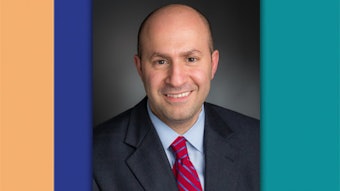To treat or not: guidance for managing complicated urinary tract infections
Panelists will discuss how to manage complicated urinary tract infections in the absence of specific guidelines

It’s estimated that 10% to 20% of urinary tract infection (UTI) cases are complicated.
“A common scenario: You’re on call in the hospital and get notified about a patient with pyelonephritis,” said A. Lenore Ackerman, MD, MPH. “The hospital physician relays that a CT scan revealed a small stone. ‘It’s not blocking anything,’ the physician says. ‘But you need to take care of it because the patient has pyelonephritis.’” What to do? The new 2019 UTI guidelines provide an evidence-based approach for diagnosing and managing uncomplicated recurrent UTIs in women. Still, managing complex cases, such as patients with asymptomatic stones or those with neurogenic bladders dependent on a Foley catheter, can present a conundrum. “For complicated cases, there’s no real guidance that says we should or shouldn’t treat,” Dr. Ackerman said.
Sunday’s session, “Panel Discussion: The Challenging Patient with Recurrent UTI,” will provide advice for clinically managing these and other complex types of UTI cases the new guidelines don’t specifically address.
“We will be discussing some of those more complicated situations and the available evidence, what is still unknown, and get advice from experts on how to approach some of these challenging situations,” said Dr. Ackerman, the session’s moderator. Dr. Ackerman is assistant professor of urology at the David Geffen School of Medicine at UCLA Health and director of research in pelvic medicine and reconstructive surgery at the UCLA Center for Women’s Pelvic Health.
Dr. Ackerman will lead a panel discussion with Christina B. Ching, MD, a member of the section of pediatric urology at Nationwide Children's Hospital in Columbus, Ohio; Daniel Arthur Shoskes, MD, a urologist with the Cleveland Clinic in Cleveland, Ohio; and Manoj Monga, MD, FACS, FRCS, professor and chair of the department of urology at the University of California San Diego School of Medicine.
The panelists will discuss how to use an evidence-based approach for managing complicated but common clinical scenarios in which complex urologic diagnoses intersect with unclear definitions of infection, given the absence of specific evidence-based guidelines and our emerging understanding of the microbiome and the urinary tract.
“In the past couple of years, we’ve come to understand that bacteriuria can sometimes be protective,” Dr. Ackerman said. “Our evolving understanding is that bacteria are with us all the time, and they’re an integral part of the urinary tract in healthy people. This new understanding has made managing challenging UTI cases even harder because what constitutes an infection is more unclear than it has ever been.” When does bacteriuria signal an infection, and when may it be beneficial? What is the best way to treat bacteriuria? When is it best not to treat? “Those questions are as pertinent for complicated UTIs as uncomplicated UTIs,” Dr. Ackerman said.
“In Sunday’s session, we’ll to try to face these and other questions and discuss what we know and what still needs to be better explored for managing complicated UTI,” she said.
Visit AUA2021 Daily News Online for more articles.











